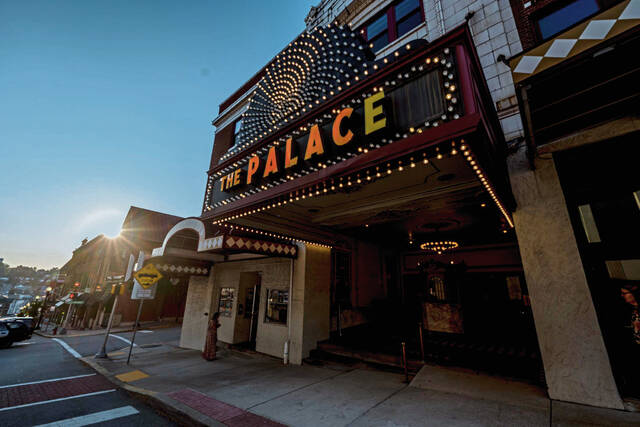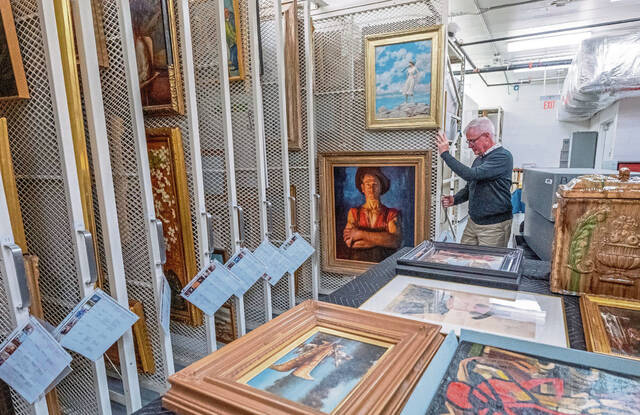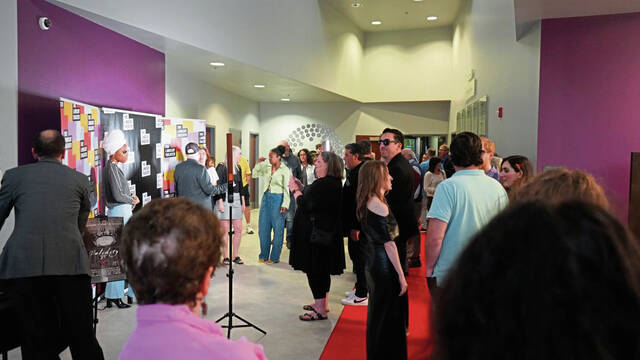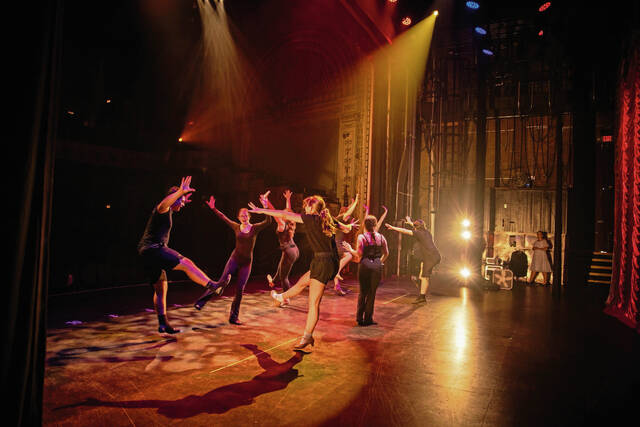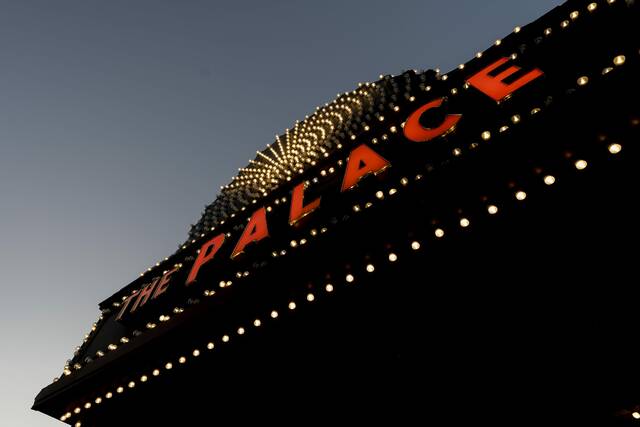Western Pa. theaters, museums struggling with funding, audience retention
On stages across Western Pennsylvania, the drama unfolding isn’t only scripted — it’s real.
Five years after covid-19 shuttered theaters and silenced auditoriums, regional arts organizations are still navigating the fallout of the pandemic, shrinking funding streams and an audience base that looks much different than before.
National data from JCA Performing Arts shows ticket sales and attendance numbers remain below their pre-pandemic levels, but that trends are promising since live entertainment fully returned in 2022.
The challenges are compounded by federal cuts to arts funding and shifting philanthropic priorities. That has forced organizations to adapt with new programming, unconventional partnerships and, in some cases, merger talks.
“Everybody is in a different position,” said Richard Hudic, executive director of the Allegheny Regional Asset District. “I don’t think that anyone would tell you that they’re busting at the seams with money.”
In late August, the Pittsburgh CLO, Pittsburgh Public Theater and City Theatre announced they are in the early stages of exploring a merger.
In a letter to supporters, directors from the three companies cited “shrinking federal arts funding, tightening demands on philanthropic priorities and the erosion of traditional subscriber models amid ever-widening entertainment choices” as reasons behind the possible move.
The letter read, in part: “For us — our city’s three largest independent producing companies — these convergent circumstances demand we think creatively and work together in a way that puts our artists and patrons first.”
“A working group representing the three theaters is months into an exploratory process where they are thoughtfully reviewing the many structural, legal and artistic considerations of a potential merger. Their priority is ensuring the long-term sustainability of Pittsburgh’s vibrant theater scene … No decisions are expected until spring of next year,” a spokesperson for a working group formed between the three companies said Wednesday.
Earlier this year, the federal government revoked many already-awarded grants through the National Endowment for the Arts and the National Endowment for the Humanities. While many regional organizations either did not receive NEA funding or did not depend on it for the majority of their budget, the echoes of that loss are still felt.
Many companies rely on multiple monetary streams, including revenue through ticket sales, subscriptions, merchandise and other consumer-driven areas; support from corporate sponsorship, private foundations and individual donors; and government support in order to operate.
Dollars and cents in Allegheny County
In Allegheny County, much of the government support comes from the Allegheny Regional Asset District, which uses funds from half of the 1% added sales and use tax in Allegheny County to provide grants to parks, museums, arts organizations and other regional assets. Since its first distributions in 1995, RAD has generated $5 billion in investments in the region by funding organizations including CitiParks, the Pittsburgh Zoo & Aquarium, Pittsburgh Public Theater and smaller theater groups such as Pittsburgh Playwrights Theatre Company and Quantum Theatre.
“Organizations have to apply on an annual basis, and those applications are determined based on their eligibility and their impact and their need,” said Hudic, adding that RAD is seeing the effects of federal funding loss on organizations.
RAD also has several contractual assets, which receive funding every year because of multiyear commitments. Those assets include the Carnegie Library of Pittsburgh, the National Aviary, Phipps Conservatory and several others.
In 2022, arts organizations received 15% of funds from RAD’s $118 million annual budget. In 2025, they received 12.4% of its $141 million budget, including $5 million in capital funding for the Pittsburgh Cultural Trust’s new space Downtown.
Arts organizations funded by RAD include heavy hitters such as the Cultural Trust, WQED Pittsburgh and the Children’s Museum but also smaller organizations, including the Pittsburgh Philharmonic, South Park Theatre and PearlArts Movement and Sound.
In 2022, 61% went toward institutions such as parks, libraries and trails; in 2025, it was 63%.
“The leaders are … constantly examining themselves, their operations, their structures, making sure they’re delivering a great product for their audience,” Hudic said. “But they’re not operating as if everything is just pre-pandemic fine.”
Arts in the city
The Pittsburgh Cultural Trust is feeling encouraged by its current post-pandemic performance.
“Our ticket sales are about 92% … of pre-pandemic levels,” said Kendra Whitlock Ingram, president and CEO of the Pittsburgh Cultural Trust.
While the Trust brings blockbuster performances like the PNC Broadway in Pittsburgh Series to the Benedum Center, it also brings in smaller events, including the Pittsburgh Dance Council, Trust Cabaret, Liberty Magic and a free art gallery space Downtown.
“I think we’re all trying to find the right formula to retain the audiences that we currently have as well as attract new ones,” Ingram said.
She added that bringing in big productions such as “Hamilton” and “Beetlejuice” attracts guests who have never been to Trust events before.
Where most smaller organizations get about 20% to 30% of their budget from earned revenue, the Pittsburgh Cultural Trust flips that percentage. According to Ingram, about 80% of its revenue comes from earned sources, which include ticket sales, facility rentals and parking fees, among others.
The Trust is looking forward to the opening of its Arts Landing space in the Cultural District, which will provide a permanent home for the Three Rivers Arts Festival and allow for the expansion of free arts programming. Construction began this year. It is expected to officially open for the Arts Festival in June, with some soft-launch events around the 2026 NFL Draft in April.
This year, as a result of the Arts Landing construction and other ongoing projects Downtown, the Arts Festival was shortened from 10 days to four and moved to the riverfront lots at the 15th Street Plaza along Waterfront Place in the Strip District.
The Pittsburgh Cultural Trust was set to receive a $35,000 NEA grant for this year’s Arts Festival before that grant was rescinded, so finding ways to make free admission more financially sustainable is a priority. The Trust said that shortening the festival cut some costs, but the savings weren’t proportional, as some expenses are fixed.
Smaller companies see mixed results
Smaller theater organizations are experiencing a mixed bag when it comes to attendance.
Quantum Theatre, which hosts innovative productions in intentionally chosen settings around the city, is riding a surge.
“We’ve had our highest-selling show after the pandemic,” said Quantum Theatre artistic director Karla Boos, referring to a production of “Hamlet” that was held at Carrie Furnace in August 2023.
Executive director Julie DeSeyn said that Quantum has broken its subscription record for the third year in a row with 670 subscriptions for the 2025-26 season.
Quantum has seen a rise in last-minute ticket purchases and has experimented with day-of purchases of discounted tickets to great success, DeSeyn said. They’re still battling the inevitability of rising costs.
“We have prioritized competitive wages for production cast and crew this year. Costs for materials have all increased — lumber and other construction materials to build our sets, costs to maintain and operate our van (critical for getting our sets and materials from place to place), purchasing/cleaning costumes, food for events, health insurance, etc.,” she said.
On the other hand, Prime Stage Theatre, based at the New Hazlett Theater on the North Side, is fighting to survive.
“As far as ticketing and attendance, we’re still struggling,” said Connie Brinda, general manager. “I don’t think it will ever come back to what it was before.”
The rising costs of materials, facility rentals and upkeep, and utilities are a concern.
“Because of the federal funding being cut, a lot of companies are now going to smaller foundations or local foundations. The local foundations are going to be inundated,” Wayne Brinda, Prime Stage’s producing artistic director, said.
Prime Stage has seen the most success with special events around its shows. It has Monday night specials, usually single-performance plays with some timely or historical significance. Other events, including Cemetery Walks and opening night Q&As, also attract new audiences.
Rebounding attendance with funding difficulties
The fight for foundations’ dollars is being felt throughout the region, not just in the city.
“We are concerned about meeting our philanthropic goals. … I think it’s going to be a last-quarter kind of decision from the philanthropic community,” said Carolina Pais-Barreto Thor, CEO of the nonprofit movie theater The Lindsay Theater in Sewickley. “I think a lot of them are paying attention to the landscape, and small organizations like us may be the last ones to receive funding.”
The Lindsay Theater shows big titles but also offers special programming for up-and-coming filmmakers, educational programming and sensory-friendly showings. The theater also hosts events other than movies. Thor remains optimistic, considering national trends in moviegoing and the numbers they’ve seen in recent years.
The cinematic industry has, at times, reached pre-prandemic levels, she said.
“That being said, we have not reached our peak — 2019 was a very high year, a top-grossing year, and we have not exceeded those levels yet,” she said.
Also, because it is a nonprofit, The Lindsay Theater relies on outside funding. Thor pointed out that the organization still suffers from federal funding cuts because the pool of dollars available from private sources hasn’t grown, so foundation support is spread thin.
“You may not lose direct funding, but we are indirectly impacted because of other needs,” she said.
Westmoreland County’s large institutions are seeing the bright side.
“I think the Palace Theatre, offering such a variety of different shows throughout the year, is really a comfort for people,” said Benjamin Luczak, CEO of the Westmoreland Cultural Trust.
The Trust is the largest arts organization in Westmoreland County, running the Palace Theatre in Greensburg and the Greensburg Civic and Garden Center, as well as a variety of other programming.
In 2024, the Trust welcomed more than 157,000 guests and patrons to its venues, which generated about $13 million in economic impact for Westmoreland County and the surrounding areas, according to an independent study from Fourth Economy.
A pretty picture in Westmoreland
One concern among arts organization leaders is the age of their subscriber and donor bases. As those bases age and younger generations’ investment doesn’t catch up, there’s some reason to worry.
“We’re taking a close look at our programming and trying to bring in maybe more talent that would gear more toward the younger folks,” said Daniel Stainer, director of marketing and patron experience at the Westmoreland Cultural Trust.
On the visual arts front, the Westmoreland Museum of American Art is feeling positive about its current position. Its numbers have jumped from 18,000 annual visitors in the June 2022-June 2023 fiscal year to 32,000 in the 2024-2025 fiscal year. Before the pandemic, the numbers hovered around 28,000.
“Ultimately, what we want is for people to engage with art, but we are doing it in a much more interesting and playful way, with the Art Maze, with Art in Bloom. And we are seeing people respond,” said Silvia Filippini-Fantoni, the museum’s director and CEO.
The Westmoreland employs strategies including corporate sponsorships, revenue from special programming and growing its endowment as a future safety net to keep the museum financially strong.
“It is a little delicate right now with the cuts to federal funding,” Filippini-Fantoni said. “We do not rely consistently on federal funding. … We don’t receive that money every year; it’s more project-based.”
However, losing that funding limits the type of projects that the Westmoreland can pursue and could impact other funding streams that are available. Most of the museum’s regular nonfederal funding comes from corporations, foundations, individuals and the state.
“We need to be proactive, look at other ways to continue diversifying our funding, building partnerships, growing our endowment, but my fingers remain crossed,” she said.
Alexis Papalia is a TribLive staff writer. She can be reached at apapalia@triblive.com.
Remove the ads from your TribLIVE reading experience but still support the journalists who create the content with TribLIVE Ad-Free.

